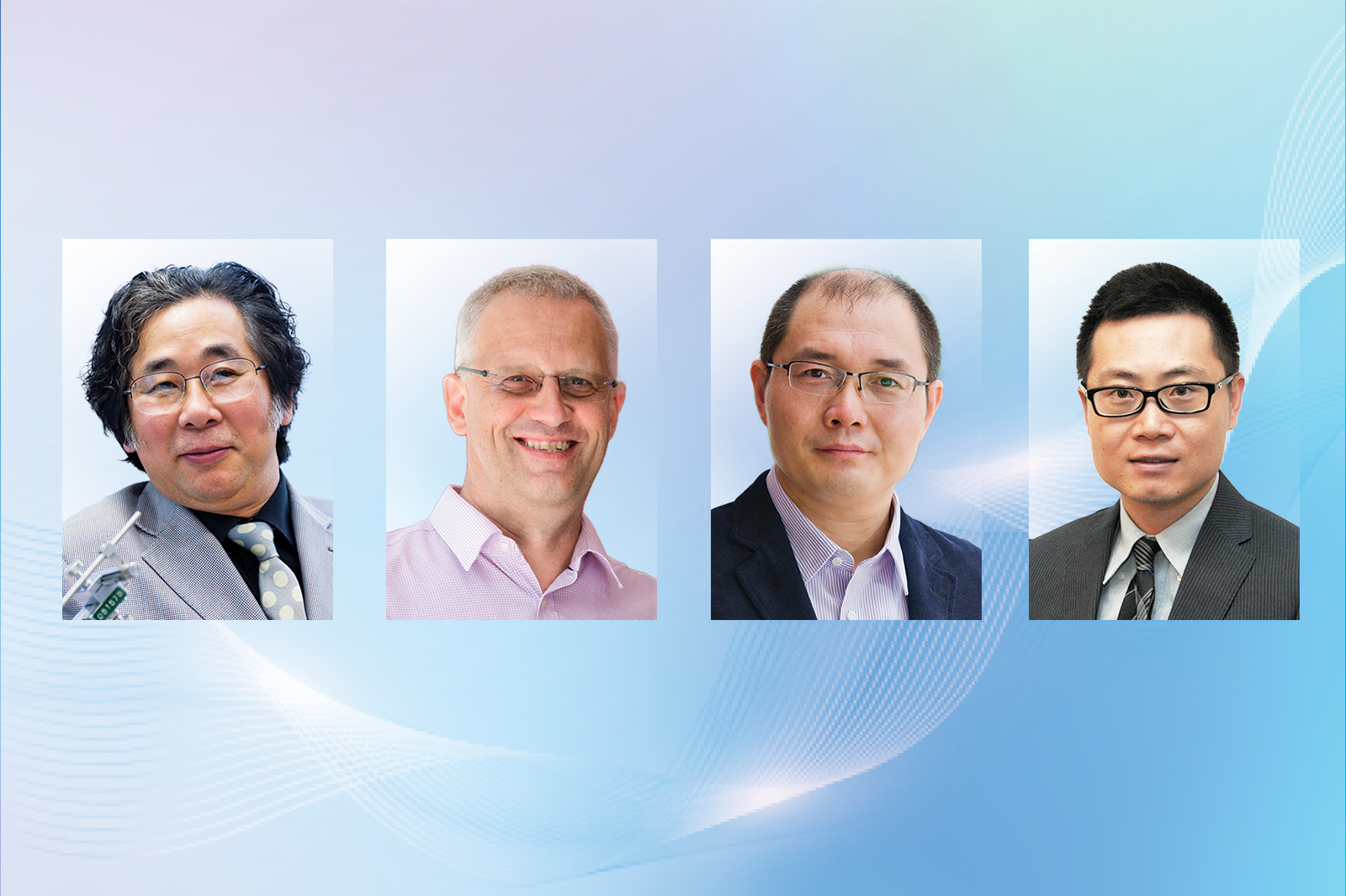RGC rewards top CityU scientists for timely, applicable research

Four academics from City University of Hong Kong (CityU) have been successful under the Senior Research Fellow Scheme (SRFS) and the Research Fellow Scheme (RFS) (2023/24) established by the Research Grants Council (RGC).
They received these awards because of their “exceptional contributions and the potential impact of their proposed research projects”, according to the RGC.
The SRFS awardees are Professor He Jufang, Department of Neuroscience; and Professor Andrey L. Rogach and Professor Zhi Chunyi, both from Department of Materials Science and Engineering. The RFS awardee is Professor Yu Xinge, Department of Biomedical Engineering.
Professor He is researching the anterior cingulate cortex of the prefrontal cortex in the brain, an area that could be a cognitive centre that integrates and regulates activities in the whole brain through direct or indirect pathways.
“We predict that the prefrontal cortex applies modulatory effects to the auditory cortex as well as to the entorhinal cortex in the medial temporal lobe,” Professor He said.
The proposed project will expand our understanding of learning and memory and, more importantly, provide instructive knowledge and a new way to develop potential drugs to treat brain disorders.
Working in the area of practical optoelectronic applications, Professor Rogach will explore the means and the mechanisms to enhance the performance of low-band-gap semiconductor nanocrystals with narrow inter-band or intra-band optical transitions lying in the near- and mid-infrared range, which he plans to achieve by interactions with plasmonic metal arrays.
“This research will offer significant improvements in the performance of infrared photodetectors and LED devices”, Professor Rogach said. “This may lead to the practical realisation of those devices based on infrared semiconductor nanocrystals”.
The deliverables include material development and contributions to spectroscopic and conductivity studies for improving optoelectronic devices in the broad area of photonic devices.
Professor Zhi’s research focuses on large-scale energy storage for developing renewable energy and highly efficient operation of the power grid, working towards a high standard for battery safety performance and a relatively low emphasis on energy density, with an emphasis on zinc batteries.
“Zinc batteries can be decidedly suitable for large-scale energy storage systems,” said Professor Zhi, adding that his project aims to “convert the zinc battery to a lean-water quasi-solid state system”.
The plan is to develop the lean-water hydrogel electrolyte with an extended electrochemical stability window of up to 3 volts, low corrosion and high ionic conductivity and a lean-water hydrogel/solid polymer hybrid electrolyte with high mechanical strength, a high overall ionic conductivity and super stability.
Professor Yu’s project contributes to future intelligent interactions between humans and robots from the aspects of sensing and feedback for tactile and olfactory information. He is developing an intelligent human-machine interface (HMI) with smart sensing and feedback systems that are thin, soft, wireless and wearable.
“We propose a new concept of skin-integrated electronics with multifunctional capabilities that can not only sense a broad range of information from tactile to olfactory but also project the information to soft actuators for providing haptic and olfactory feedback,” Professor Yu said.
Deliverables include new technologies of wearable materials, devices, mechanics and integration strategies for the HMI interface; a set of proposed skin-integrated electronic prototypes that can be used for intelligent HMI; collaborations with industries of robotics, electronics and biomedical instrumentations; and IP licensing and spun-off of the technologies.
The RGC has approved ten awards for each scheme in this round. Each SRFS and RFS awardee will receive a fellowship grant of approximately HK$7.8 million and HK$5.2 million, respectively, for a period of 60 months.
“We wish the awardees all the best in their quest for research excellence and we have full confidence that their projects will substantially contribute to advancing knowledge in their respective fields,” said Professor Cheng Shuk-han, Associate Vice-President (Research).